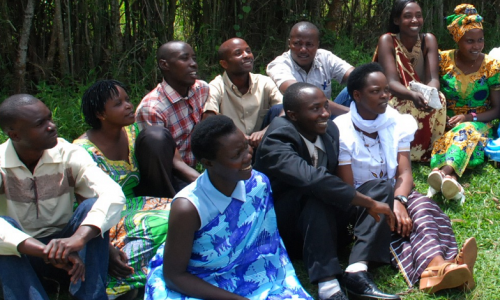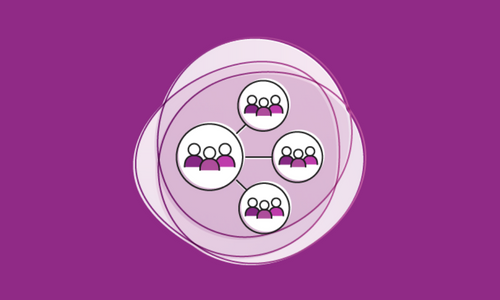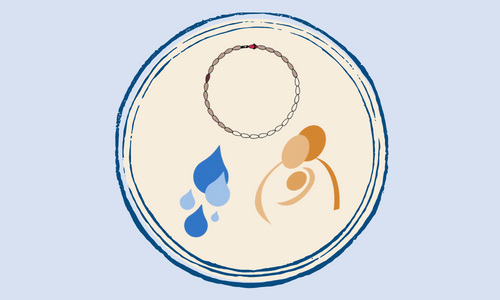Integrating the Standard Days Method into the community-based family planning method mix
[Originally posted on JSI’s The Pump Blog]
In order to achieve FP2020’s goals and ensuring that people have access to a broad range of contraceptives, it is essential that the Standard Days Method® (SDM) be included as part of the family planning (FP) modern method mix in health facilities and community-based family planning (CBFP) programs. On December 9, 2014, Advancing Partners & Communities (APC) launched its series of CBFP related technical consultations. This consultation focused on raising awareness of SDM as part of the method mix. Close to 50 people representing over 20 different organizations, including representatives from USAID as well as country representatives of programs in India, Mali, Nigeria, Rwanda and Uganda, convened to discuss the integration of SDM into CBFP programs.
Why SDM?
SDM is a simple, fertility awareness method that appeals to many women with an unmet need for FP, especially those who are new to using FP, desire non-hormonal FP methods without side effects, or want to transition from less effective methods. Based on scientific knowledge about reproductive biology and proven effective in a multi-country efficacy trial, SDM meets established criteria as a modern method. A recent literature review found that the method has a foothold in some countries on par with other modern methods that have been around much longer, such as male and female sterilization and the IUD. Correct and typical use effectiveness rates are similar to other user directed methods of contraception: 95 percent with correct use and 88 percent with typical use. The literature review found that most women who use SDM find it easy to use and are satisfied with the method.

Field Perspectives: Barriers & Opportunities
CARE International, the Institute for Reproductive Health (IRH), the Society for Family Health (SFH), the Uganda Protestant Medical Bureau (UPMB), and World Vision shared their country experiences which offered compelling evidence for including SDM in the CBFP mix. There were several takeaways from these presentations on the barriers and opportunities of introducing this method:
- Requires champions to build acceptance and sustain integration efforts.
- Promotes male engagement in FP.
- Appeals to Roman Catholic, Protestant, and Muslim clients and service providers.
- Increases knowledge about the fertile period.
- Requires women to be able to negotiate sex.
- Requires active supportive supervision, as with all CBFP programs.
- CycleBeads® are an excellent teaching tool that providers, women, and men understand.
- Community health workers who have been trained in SDM and are supportively supervised can provide quality SDM services.
- CycleBeads availability varies depending on the country context and procurement mechanisms in place; however they are procured by donors as well as by Ministries of Health in a number of countries.
Cross-Cutting Themes
Rich small-group discussions exploring research gaps, resource needs, and the challenges and barriers to integrating SDM in CBFP programs found several cross-cutting themes:
- SDM can be used as a fertility awareness tool with both adolescents and adults, couples who are HIV+ or discordant couples (where one partner is HIV-infected and the other is not) who want to plan their pregnancies, and couples planning their pregnancy.
- Advocating for policy change is context specific, and there is ample existing evidence available that can be used rather than conducting new studies.
- Advocacy with Ministries of Health to include SDM and CycleBeads into national reporting systems, logistics and procurement systems, and FP strategies and policies strengthens the supportive environment and eliminates many service delivery barriers.
- Alternatives to CycleBeads merit further exploration, including mobile applications such as, CycleTel™, CycleBeads® Apps, CycleBeads® Online, plus using a paper calendar in remote areas where CycleBeads are not accessible.
Looking Ahead
Check out the EVIDENCE Project’s working paper on the evidence for use, implementation, and scale-up of SDM as well as APC’s official meeting report.
Here are some key resources for integrating SDM into CBFP programs from the K4Health website:
- Standard Days Method® and CycleBeads®: Top 20 Most Frequently Asked Questions
- SDM Factsheet
- Process for Integrating the Standard Days Method into Services: Essential Steps
- Standard Days Method®: A Modern Family Planning Method
- Standard Days Method® with CycleBeads® Provider Job Aid
- CycleBeads® Instructions: Pictorial Africa (ENG) [PDF, 1.07MB]
Download the presentations and other supporting materials from the meeting on the APC website and be sure to check out the conversation on Twitter from the December 9th event using #APCTech.
Stay tuned for recommendations from the next APC Technical Consultation with WHO and USAID on the classification of contraceptive methods.
 Where We Work
Where We Work  Press Room
Press Room  FACT Project
FACT Project  Passages Project
Passages Project  Learning Collaborative
Learning Collaborative  Search All Resources
Search All Resources  Social Norms
Social Norms  Fertility Awareness Methods
Fertility Awareness Methods